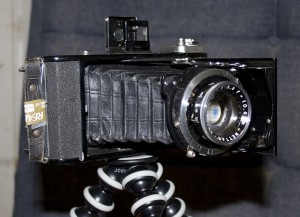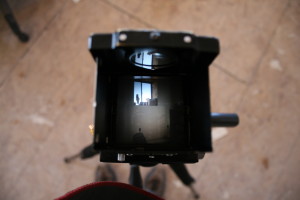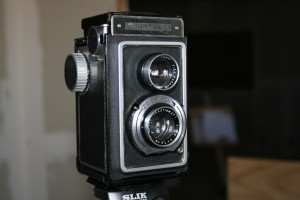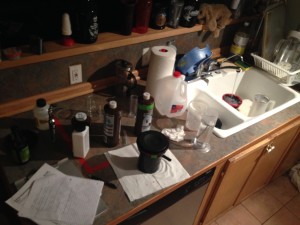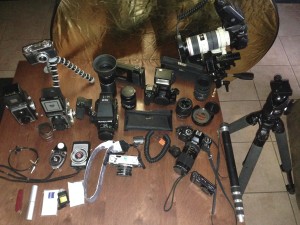Film developing costs can be pretty expensive when you are sending the film rolls to a lab. To cut down on those costs and to have some chemistry fun at home, I took on developing my own black and white film. Color film isn’t terrible hard to do at home either, but the chemistry is a little less ecofriendly. The steps are much more cookie cutter, and everything has to maintain a certain temperature.
So instead, I use Paterson Super System 4 developing tanks and plastic reels. I load the film in a changing bag in a room without windows with a towel stuffed under the door. So far that has yielded pretty good results and I’m a pro at winding 35mm and 120 roll film onto the reels without seeing what’s going on elbow deep in a changing bag.
My go to developer is Kodak HC-110 because it doesn’t go bad very quickly, and I don’t develop film weekly or even monthly. I usually wait until I have several rolls ready and then do them all at once.
The amount of time the film sits in each chemical is determined by what type of film it is and the ISO (light sensitivity) number. There’s a sheet called the massive developers chart that I use. For timers I use my smart phone or tablet. If you are interested in learning how to develop your own film, I would love to teach you.
For drying the film, I’ve found a photoflo solution helps with water spots, and also hanging the film at a bit of an angle. The angle is important because all the water flows to the edge of the film and spots up there instead of right in the middle of the negative. Someday I will have a nice air filtrated drying chamber, but for now I use a cheap method to create a clean room. I just run the shower on hot for a few minutes until the whole room is steamy then turn on the bathroom fan and once it’s not humid in there anymore I bring the film in and set it up to dry. It really helps with dust on the negatives.
Once the negatives are all dry, I’ll cut them up, put them in plastic sleeves, and get out my film scanner and clean it up really good with compressed air and anti-static spray. Then the negatives are scanned in strips, and I edit using Adobe Photoshop and Lightroom.

